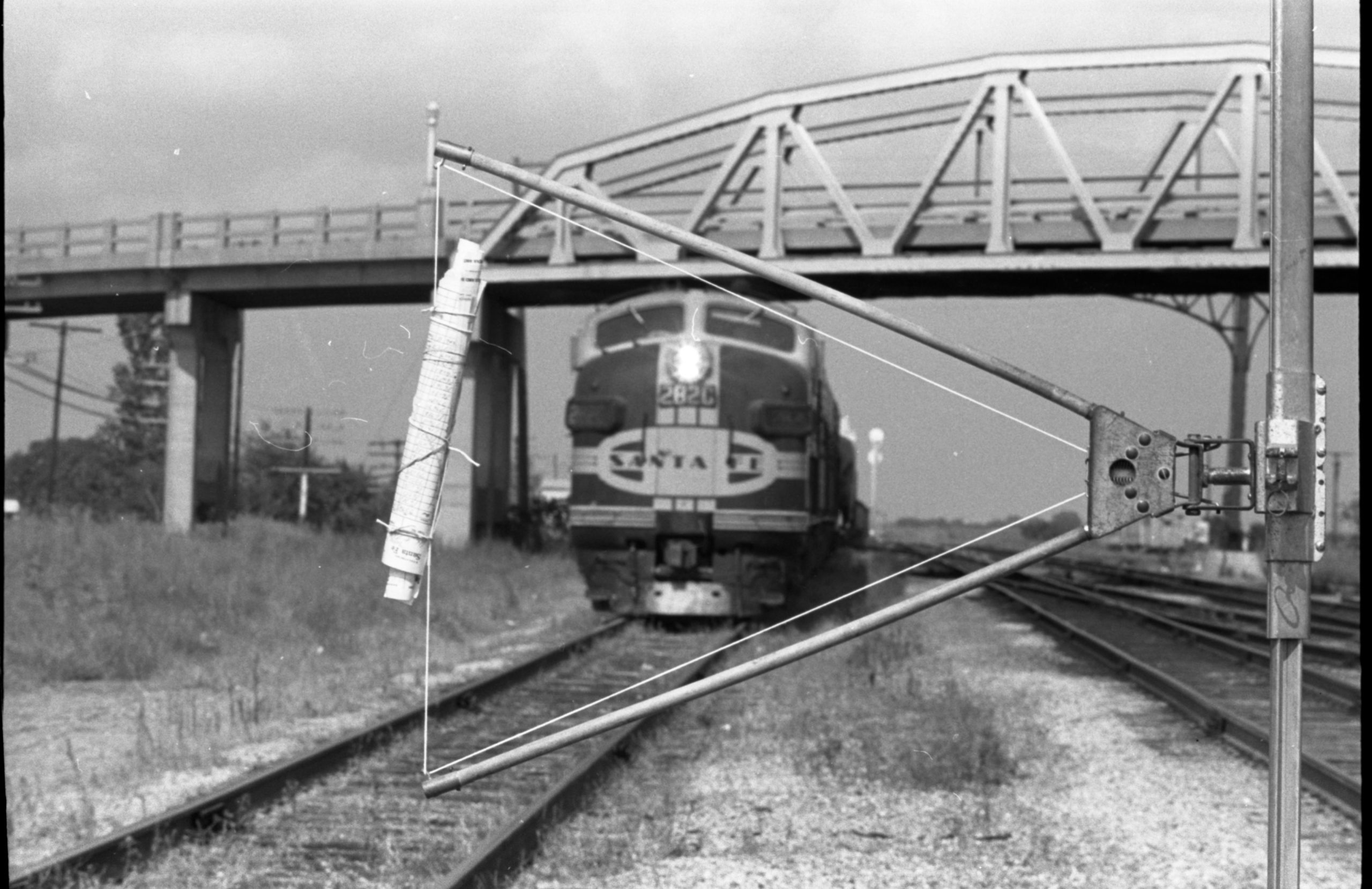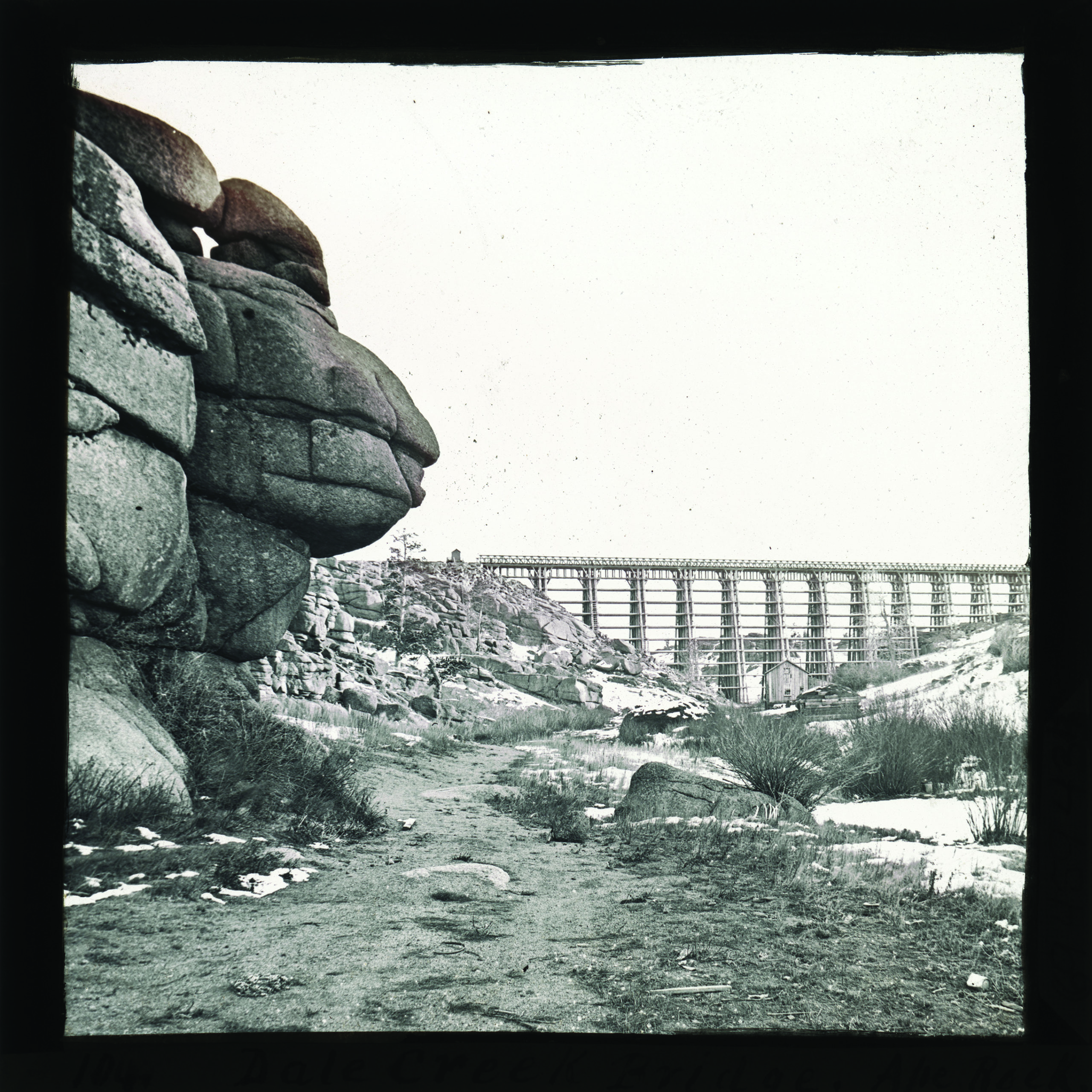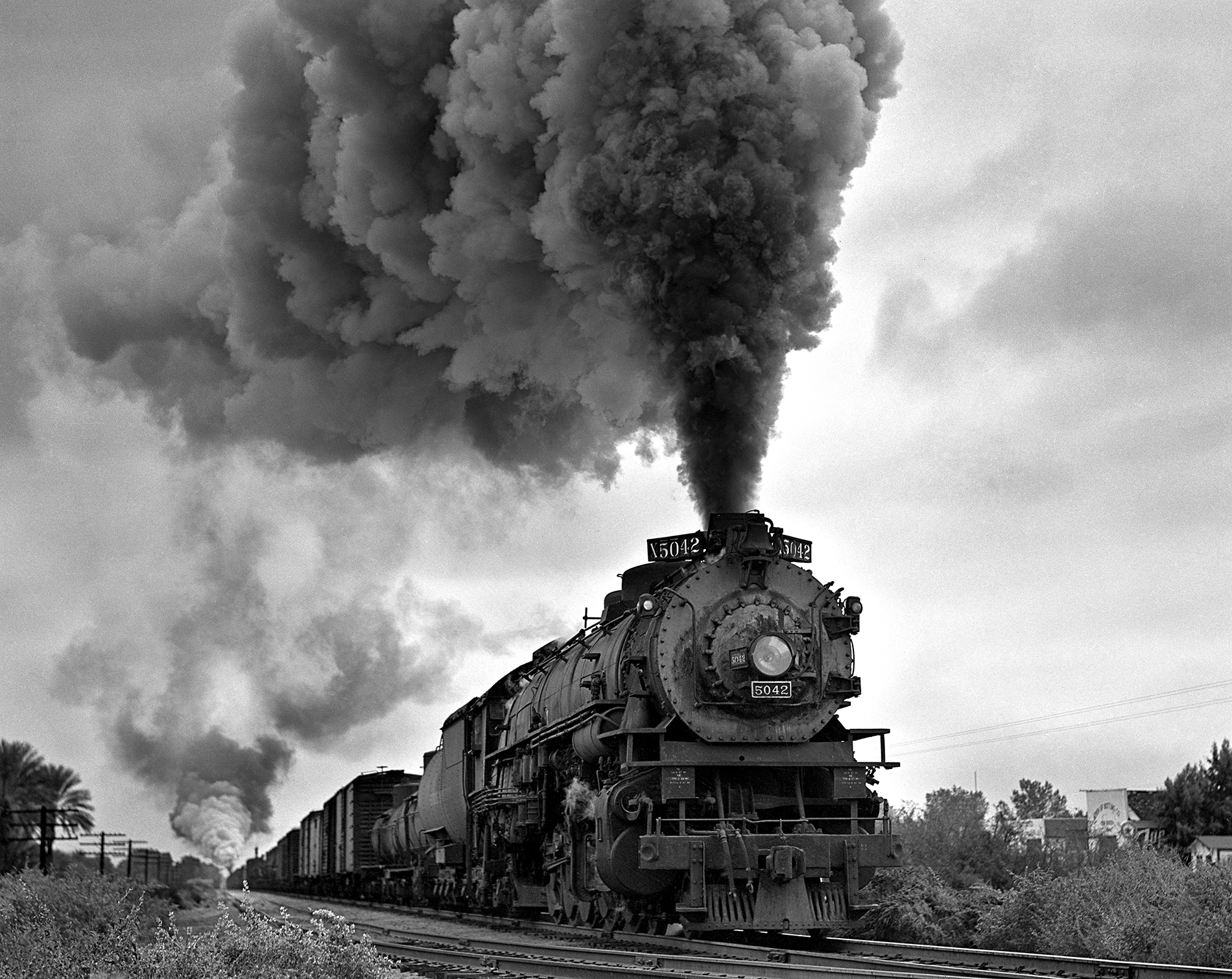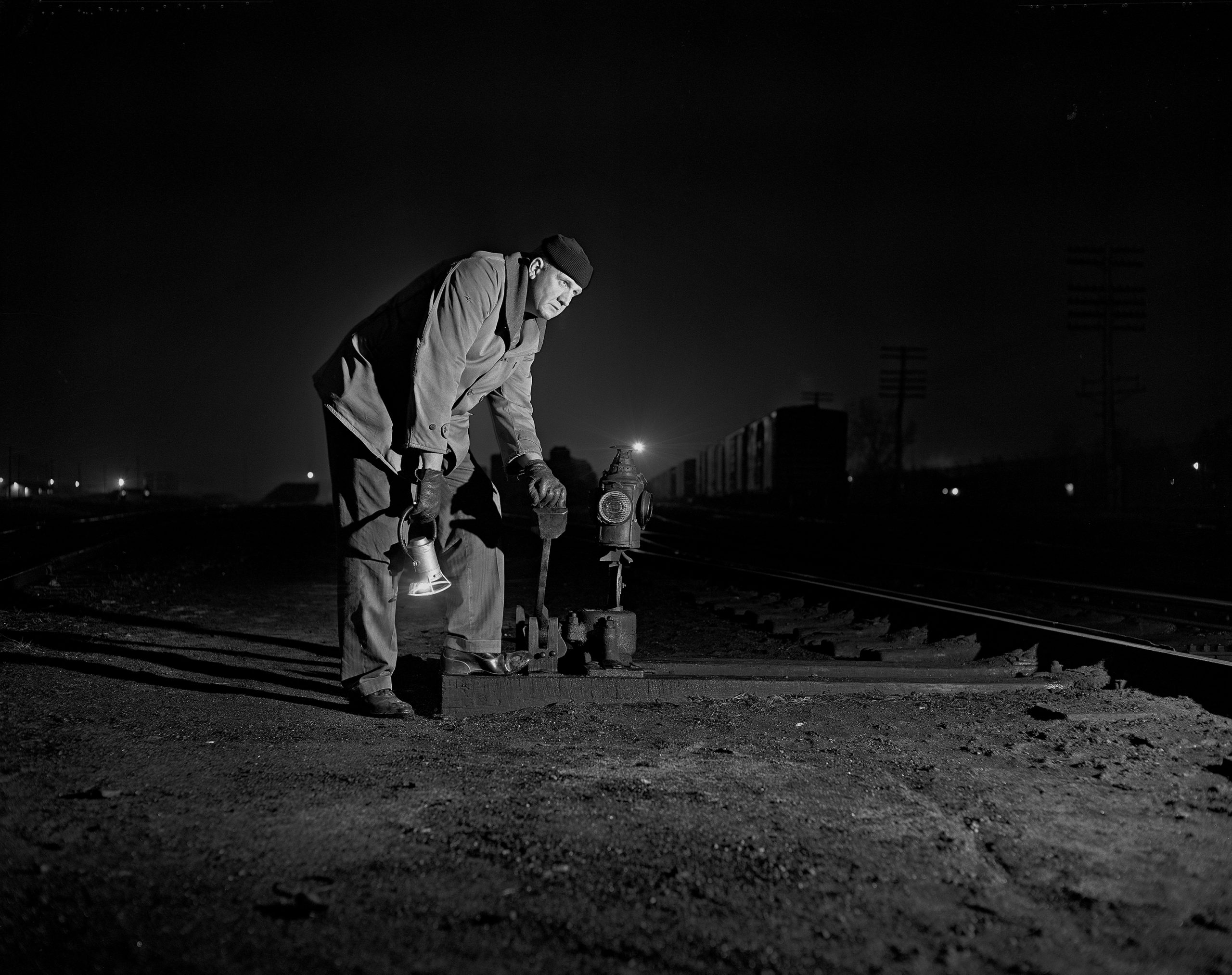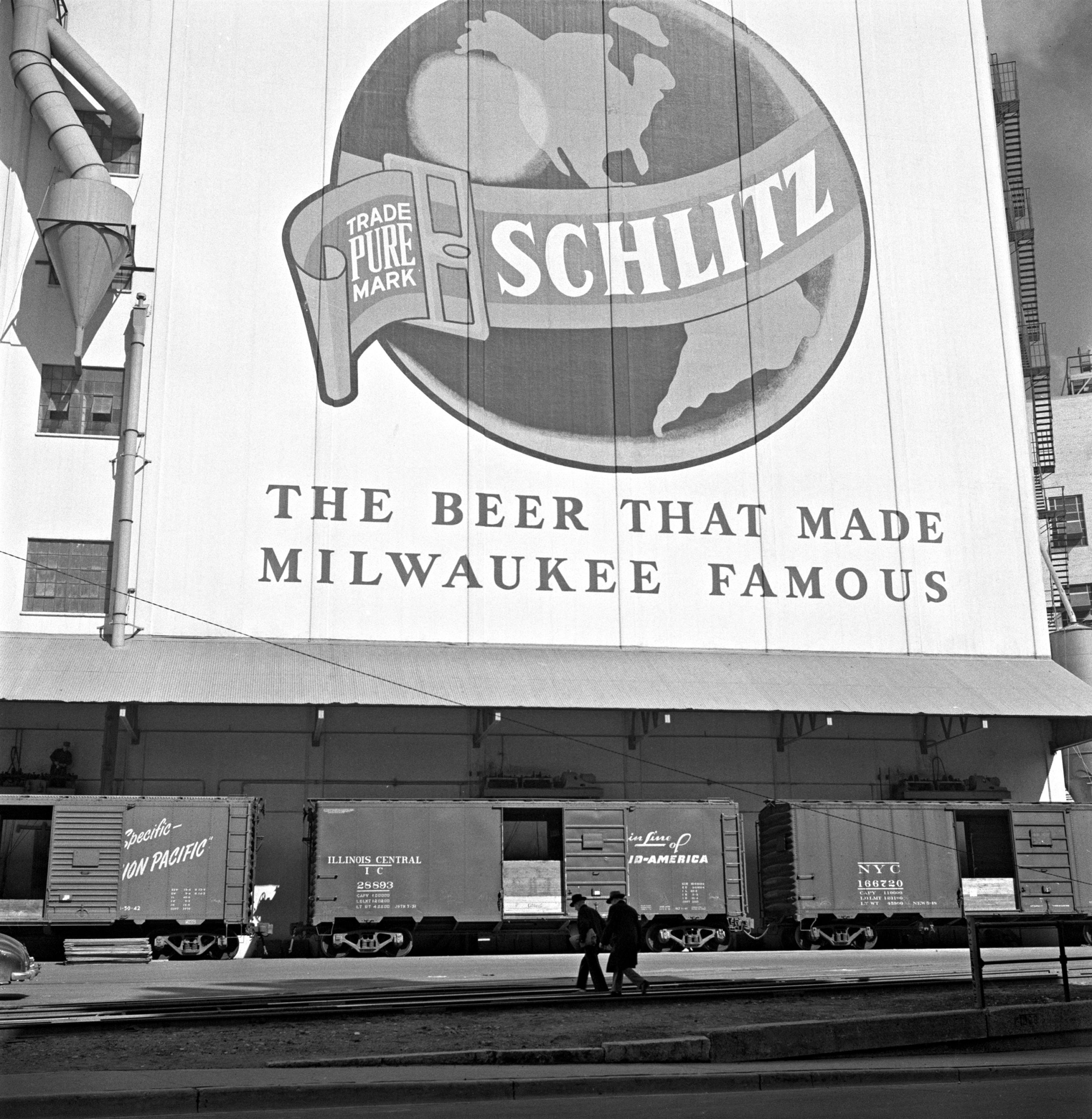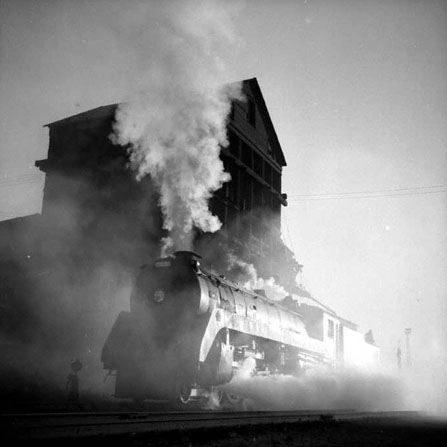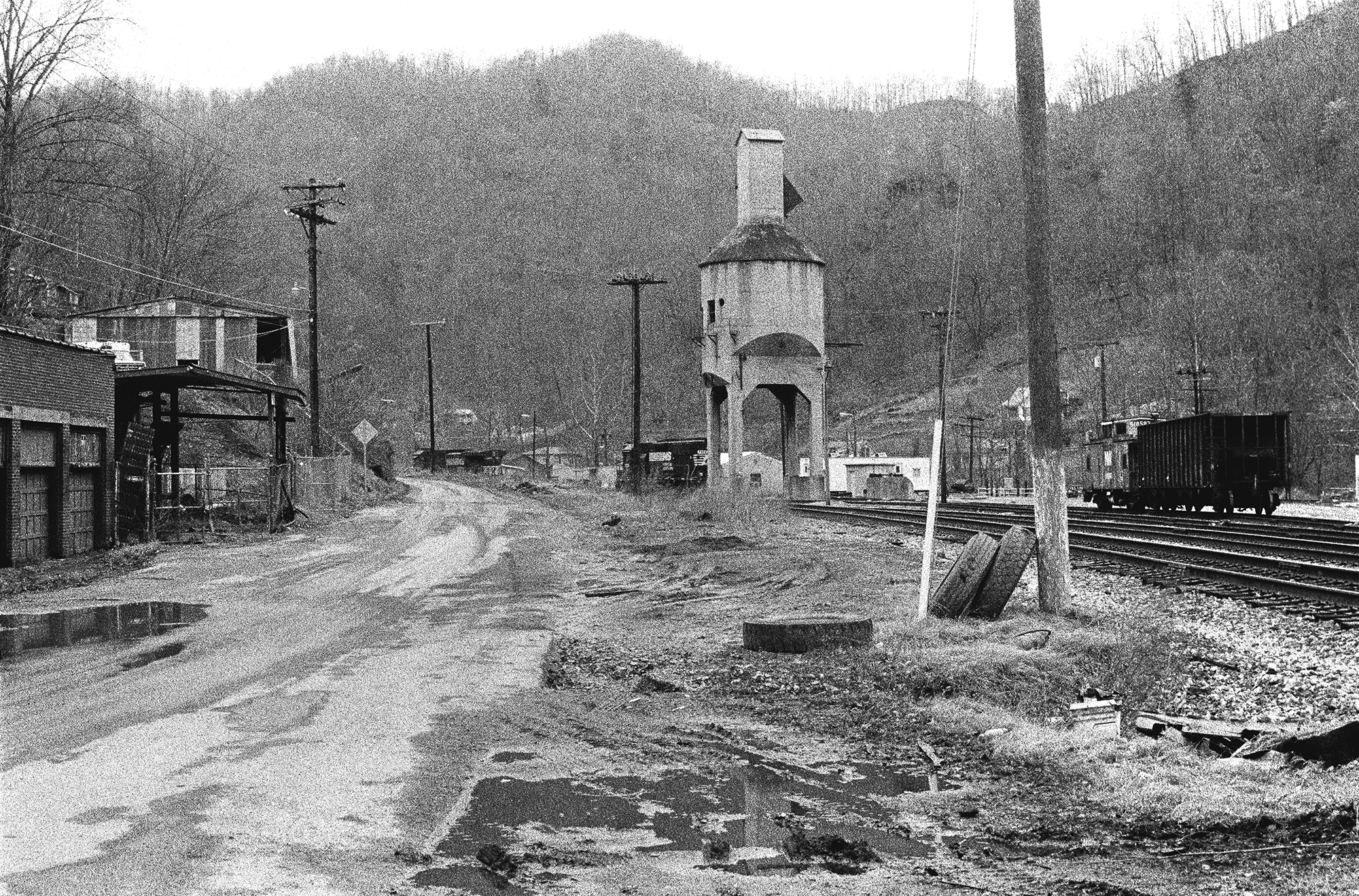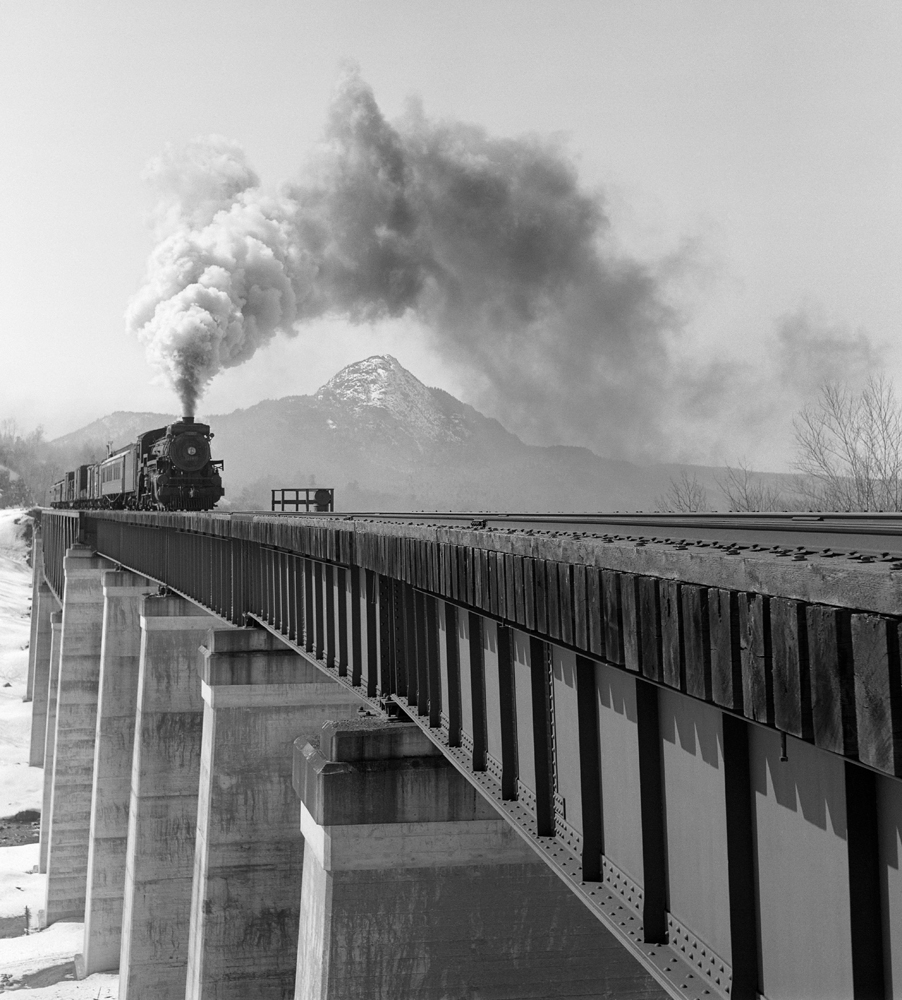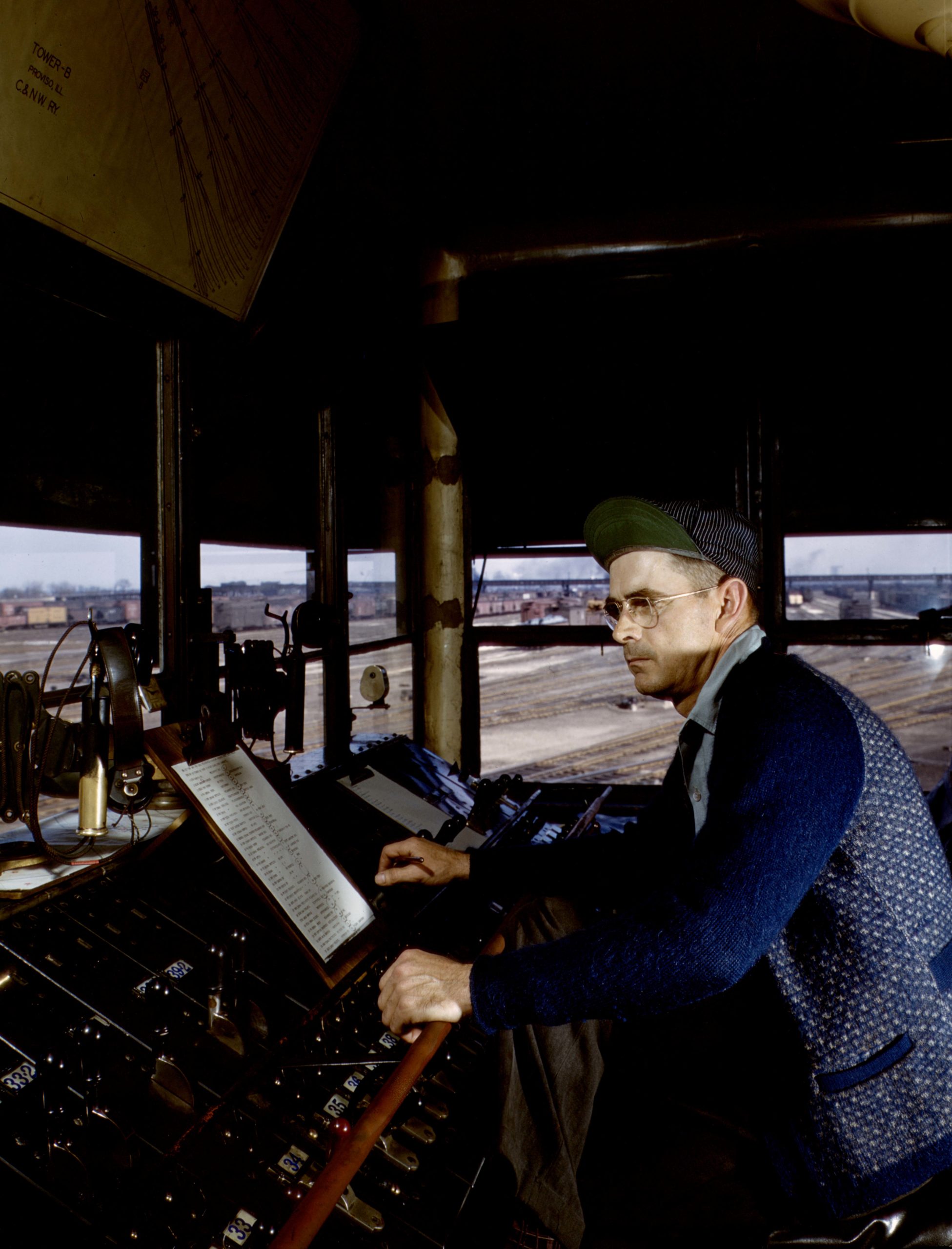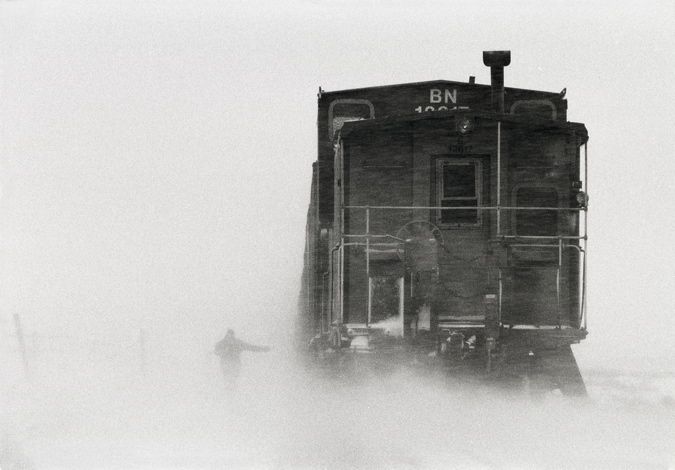The Center for Railroad Photography & Art creates partnerships with photographers and museums to bring multiple forms of beautiful and significant railroad art to venues across the country. Stemming from a core focus to preserve and present significant images in railroading, our traveling exhibitions include both solo and group shows that span the history of railroading in the United States and beyond.
Since the first United States railroad thundered into action in 1829, American industry spread across the continent as tracks were driven down from coast to coast. The birth of railroads helped catapult the United States – and the world – into a new industrial age that defined modern society, as we know it. Following quick on its heels, the art of photography flourished in the late nineteenth century to capture not only memories but the beautiful forms of everyday life as well. Over the past century artists have aspired to document the enormous impact railroads have played in American history, society, and culture. Through appealing topics that encompass the almost 200-year-old history, the Center’s array of traveling exhibitions taps into not only significant educational themes profitable to all ages, but also introduces visitors to the stunning and evocative world of railroad photography.
If you would like to find out more about bringing one of our shows to your venue, please contact the Center at 608-251-5785 or send an email to info [at] railphoto-art [dot] org.
Current Exhibitions
 Credits, (Above): E.L. Thompson, B&O RR Historical Society (B&ORRHS) Collection, courtesy of B&ORRHS; (Below): Courtesy of the photographer, Franz Jantzen
Credits, (Above): E.L. Thompson, B&O RR Historical Society (B&ORRHS) Collection, courtesy of B&ORRHS; (Below): Courtesy of the photographer, Franz JantzenRails || Trails is a traveling photography exhibition that explores the lasting ways railroads connect people and places through the rails-to-trails movement in the United States. The mission of the exhibition is to educate the general public about the prolific influence that railroads have left on the United States’ history, geography, economy, and community structures through the lens of the rail-trail movement and its presence in both rural and urban life.
The exhibition spotlights 24 rail-to-trail transitions across 19 states. The photography features collections from the Center for Railroad Photography & Art, the Denver Public Library, the Museum of History & Industry, the Historical Society of Western Virginia, and many more. We are also proud to feature the photography of members of the Center for Railroad Photography & Art who assisted in the creation of this exhibition.
Wallace W. Abbey: A Life in Railroad Photography
The exhibition Wallace W. Abbey: A Life in Railroad Photography serves as a platform to present the life work of one of America’s most dynamic railroad photographers. Abbey’s unique role as a photographer, journalist, historian, and railroad industry executive allowed him to capture often overlooked perspectives spanning primarily from the 1940s through the 1970s. He offers a full understanding of all aspects of railroading and delivers his visual ideas in an exciting presentation enjoyable to the railroading community and the general public alike.
After Promontory: 150 Years of Transcontinental Railroading
Following the meeting of the Central and Union Pacific Railroads in Promontory, Utah, on May 10, 1869, an era of transcontinental railroad building began. Their construction swept away the dominance of native tribes, ended the open range, and restructured the West into a network of resources and industries dependent upon clusters of urban centers. After Promontory: 150 Years of Transcontinental Railroading examines the significance and lasting impact of the transcontinental railroads on the American West. The exhibition takes a wide view, considering the events at Promontory to be the start of a larger phenomenon, an entire era of transcontinental railroad construction that stretched for nearly fifty years. At its core is the assertion that, collectively, the transcontinental railroads profoundly reshaped the human geography of the West, giving birth to the region we recognize today.
Beebe & Clegg: Their Enduring Photographic Legacy
With dramatic images and sweeping promotional strategies, Lucius Beebe—joined in 1941 by his life partner Charles Clegg—introduced railroad photography and the world of railroading to wide popular audiences. Their pioneering efforts established a broad market and wide appreciation for rail photography, leading to its far-reaching appeal in print today. At a time when railroad books were almost unknown, it took a celebrity writer of the stature of Lucius Beebe to transform the seemingly prosaic subject of railroads into books that beguiled the public. Beebe and Clegg pioneered the genre of railroad books, brought their material to mass-market audiences, and established themselves as household names.
The Call of Trains: Railroad Photographs by Jim Shaughnessy
Shaughnessy and a small crew of his colleagues distinguished themselves from other railroad photographers of their generation by starting to think more photographically, exploring the camera’s potential more creatively. Shaughnessy made conscious decisions to see beyond trains, embracing the “ugly beauty” of industrial environments. This decision set him apart from most amateur photographers of the day. His aesthetic choices demonstrated the desire to include the human element, the desire to place trains and locomotives in a broader context, and the desire to explore the railroad after dark.
Since statehood, beer has played an integral role in the growth of Wisconsin industry while bringing Milwaukee national fame. What might be less obvious, but no less important, was the profound role that rail transportation played in this story. Milwaukee’s Beer Line narrates the rise, fall, and rise again of Milwaukee’s beer industry through the eyes of the Milwaukee Road’s Beer Line.
Railroads and the American Industrial Landscape: Ted Rose Paintings and Photographs
With stunning and evocative watercolors, Ted Rose became one of the nation’s greatest railroad artists during the last third of his life. Much earlier, as a young man, he demonstrated a flare for photography that foreshadowed his later success with brushes and easels. In both media, Rose captured the dynamism, nobility, and beauty of North American railroading in everyday life. The majority of Rose’s photography spans a five-year period in the 1950s and 1960s that coincided with the end of regular steam operations. Drawn to the steam locomotive like so many railroad enthusiasts, Rose tracked down some of their last vestiges across the continent, beginning in the United States before moving to Canada and finally Mexico.
The Railroad and the Art of Place: Photographs by David Kahler
The exhibition The Railroad and the Art of Place: Photographs by David Kahler traces industrial rail lines across America’s Appalachian coal country. Once thriving economic centers, Kahler’s view of small-town West Virginia and Kentucky illustrates the ebb and flow of communities dependent on railroad traffic amidst the decline of the once powerful coal industry. Desolate, yet beautiful, Kahler’s photographs expertly capture the raw emotions attached to the railroad industry. Along with the loss of major coal productions in the region and the resulting economic vacuum it created as it disappeared, the railroad continues to serve as a financial lifeline and a reminder of a richer past.
Requiem for Steam: The Railroad Photographs of David Plowden
Renowned photographer David Plowden traces his fascination with railway steam power back to his childhood memories. A fervent interest in railroading led him to a profession behind the camera. He worked as an apprentice to O. Winston Link and studied with Minor White and Nathan Lyons before striking off on his own in the 1960s. Sixty years later, the art community widely recognizes Plowden as one of America’s greatest landscape and industrial photographers.
Partnered Exhibitions
Railroaders: Jack Delano’s Homefront Photography
Railroaders: Jack Delano’s Homefront Photography demonstrates that the railroad industry—like ethnic, religious, and neighborhood enclaves—fostered its own communities and networks. Through the stories of the lives of the men and women of railroading, this collaborative exhibition between the Center for Railroad Photography & Art and the Chicago History Museum demonstrates how the people of one industrial community represent, in microcosm, the vastness of Chicago society and, by extension, American society as a whole. The exhibition features some sixty of the remarkable images created in 1942–1943 by photographer Jack Delano as part of his assignment to document the nation’s railroad story for the Farm Security Administration-Office of War Information.
*Exhibition circulated by the Chicago History Museum
Steam – An Enduring Legacy: The Railroad Photographs of Joel Jensen
Photographer Joel Jensen has owned a lifelong fascination with steam locomotives. Infused with a deep appreciation for rural America that grew from his father’s penchant for two-lane roads, Jensen’s interests extend far beyond the locomotives to encompass the landscapes they traverse, the industries and communities they serve, and especially the people who keep them running. His photographs are as much a tribute to the crews, shop workers, and volunteers, as they are to the locomotives themselves.
Past Exhibitions
Along the Line: 1930s Railroad Photographs by John Walker Barriger III
Representations of Railroad Work, Past and Present
Trains Around the World: Railroad Photographs by Fred M. Springer
Trains that Passed in the Night: The Railroad Photographs of O. Winston Link


